Today I took my two daughters to a movie. The theater was located in a large suburban shopping mall in Southwest St. Louis County, “Crestwood Plaza.” I had not been to this mall for several years, and I was shocked at what I saw. Approximately 40% of the stores have been shuttered and the entire place was like a ghost town. A lonely security guard told me that the stores have been rapidly failing over the past two years. That comports with my recollection. Two years ago, this mall was a packed and thriving shopping area located in a solidly middle-class community. Crestwood Plaza is not an isolated story; shopping malls are failing all across America.
[I’ve posted a gallery of today’s images many of these shuttered stores along with this post. If you don’t see that gallery, click the title to this post to go to the permalink, where you will see those thumbnails.]
I sometimes get snarkish when someone tells me they’re going to a shopping mall. I sometimes ask the Intrepid shopper to do me a favor and buy something practical for me, “Could you please buy me a hammer.” I usually get the same reaction, a puzzled look accompanied by a response “They don’t sell practical things like hammers at shopping malls.” Now I’m not denying that malls sell clothes or that we need clothes. Most mall clothes are for far more than staying warm or covering up. They are much more often than not, for impressing others.
For that reason, I’m not shedding tears for the shattering of dozens of mall stores at Crestwood Plaza or anywhere else. The failure of most of the stores means that we won’t be buying things we don’t actually need. Because Hallmark no longer sells its commercial greeting cards, we might be “forced” to create and send our own personalized cards and letters to each other. Now that Libby Lu gone, our pre-teen daughters can get back to being children rather than obsessing about their sex appeal. In my mind, many of these store closings are mostly good things, although I am saddened by the thought that so many people have lost their jobs due to these shutdowns. See these terrific videos by Josh Golin of CCFC regarding the dangers of turning our children into rampant consumers.
Another silver lining is that the mall owners have been forced to do something different with their space in order to survive (assuming they do survive). What they’ve done at Crestwood Plaza is to lease out many of the “store” spaces to art galleries, educational facilities, community theaters and other arts and crafts workshops for children and adults. In other words, it appears that the mall owners are opening up their malls for people who want to develop their minds and skill-sets rather than simply their pocketbooks.
When I saw this shocking and sudden change at Crestwood Plaza, it immediately occurred to me that art education facilities serve many of the same functions as the sales of knickknacks and other unnecessary consumer goods: both of these allow people to display who they are to others, not in a trite sense, but for deep evolutionarily-honed reasons. Buying consumer products is a terribly inefficient way to display one’s character to others; in fact, runaway consumerism is a mind-boggling waste of the Earth’s dwindling resources.
There’s no better way to explain the functional similarity between doing things (to impress others) and buying things (to impress others) than by quoting a few passages from Geoffrey Miller’s excellent new book: Spent: Sex, Evolution and Consumer Behavior (2009). If you’re going to make one last fling of buying consumer goods for yourself and your friends, I recommend buying a stack of copies of Miller’s Spent (as I did) and distributing them to your friends. I predict that it will affect your outlook on consumerism, and consequently your lives, dramatically. Further, Spent is a clearly written, insightful and wildly entertaining book. Here are a few passages to illustrate this post:
How can we as individuals live happily in a post-consumerist style that still lets us show off our personal traits, so that we obtain the social and sexual attention we crave? . . . One problem with [conspicuous consumption] is that it leaves too much blank space in the middle, so there’s not much of ourselves left for lovers or friends to discover in the longer term. This could be called the centrifugal-soul effect; runaway consumerism leaves us feeling superficial and empty because we project ourselves outward to observers too promiscuously and desperately. (255) …
Consider which kind of Valentine’s Day gift you would rather receive from someone whose affection you crave yet doubt: 1) A dozen red roses ordered online and delivered with a generic “loads of love” computer-printed note, or 2) A customized sonnet … you can tell that the latter is more compelling because it also makes a better story to tell your family and friends. (272)
Miller warns that we are all hypocrites and that we ridicule others for showing off by purchasing consumer goods, but we rarely see our own expressions of “consumer narcissism.”
We’re all hypocrites these days, one way or another–but rather my point is that we cannot track our ever shifting forms of consumer narcissism if we do not clearly understand how ancient human instincts interact with the modern economy, and how people display their ancient psychological traits through this week’s hot new products. (60).
How bad have things gotten? Essentially, we are laughable and desperate beings, working so hard to display our worth to others by ringing up large debts we can’t pay and by exhausting our planet’s resources. Something’s gotta give, and change is on the way:
Something else is also replacing the current system of consumerist capitalism and its key features: credentialism, workaholism, conspicuous consumption, single-family housing, fragmented kin and social networks, weak social norms, narrowly economic definitions of social progress and national status, and indirect democracy distorted by corporate interests and media conglomerates. These seemingly natural features of contemporary society will seem as alien to our great grandchildren as mammoth hunting, field plowing, and typewriting now seem to us. (305)
But won’t our economy collapse into ruin once we stop buying all those things that we don’t actually need? Miller describes this commonly articulated concern:
First recession, then depression, then economic collapse. The next steps are predictable: governments fall, police vanished, riots flare, anarchy spreads, services and collapse, utilities fail, people starve, babies cry, gangs rape, plagues spread, warlords rise, armies clash, nukes explode . . . such fears would be reasonable if the changes happened too quickly for markets, companies and governments to adapt. .. . but over the longer term, economies are astonishingly resilient. (327)
Consumerist capitalism is largely an exercise in gilding the lily… . we rely on goods and services acquired through education, work, and consumption to advertise our personal traits to others. These costly signals are mostly redundant or misleading so others usually ignore them. . . . this is an absurd way to live . . . runaway consumerism alone offers little more than narcissism, exhaustion, and alienation. We need the freedom to explore different ways of displaying our traits to the people we care about. (329)
[For a listen of several other DI posts regarding runaway consumerism, see here]
[I’m adding this link, DeadMalls.com, to the body of the post – It is a terrific resource on this topic. Thanks to Erika Price for the rec.]

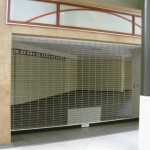
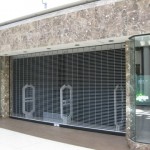
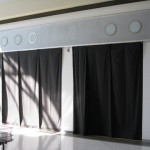
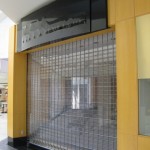
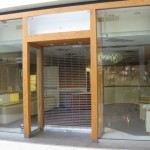
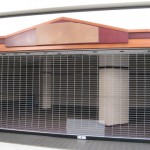
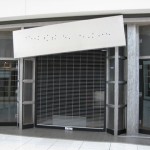

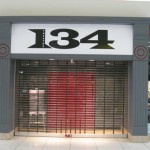

Erich, I so agree with the end of shopping malls and in particular, this mall. I have to admit, as a kid in So. County, I did spend my fair share of time walking around this mall as a pre-teen as it was a "place to hang" and for that it was fun. That's about a mall's only redeeming quality, but there are better things for kids to do. My mom, besides, having her revolutionary idea for burial, also hated the day they closed in Crestwood Mall. When I was a little kid, it was a string of stores outside. It used to be more of a place to be outside and gather and just not so commercial. My mom said it was an awful progression when they made it into a big mall and she stopped going there. They took out the stream where we could put our feet in … most won't even know what I am speaking of… some will. Anyhow, I agree that I would rather have fun family things to do than waste my time buying pointless things in a mall.. spend the day at Elephant Rocks or the like… it's a lot more memorable and fun in the end.
Patti: Thanks for your comment. We do agree. I wanted to let you know that I plan to write a post about your mom's fascinating idea for her burial. But here's the teaser for those who don't know you: Your mom wants to be "buried" inside of a clear Plexiglas coffee table in the family living room, so that she can continue to be part of family gatherings.
Which intrigues me – she is thus shunning the traditional burial, which is many cases is also a display of wealth and status (e.g., see this post re Bellefontaine Cemetery in St. Louis).
Erich, you should send those shots into Deadmalls.com. Actually, for a bit of schadenfreude, you should head to the site's "features" section where you can choose from a state-by-state listing of the country's most decrepit, depressing shopping centers. Ohio sure has a lot…
The rise of the mall is as depressing as the fall of the mall, of course. I used to work in a Hallmark store in a shopping mall in the Cleveland suburbs. The city in which the mall resides has no central location, no "town square" or large park or civic center. The city is a mass of strip malls, big box retailers and crummy bars. The mall therefore is the city's central social location.
The mall structure opens a few hours earlier than the actual stores, so that elderly "mall walkers" can come in to exercise. The mall hosts local choir and school play performances. If the city wants to host a flea market or antique show, it is done in the halls of the mall. The city's Christmas festival is held in the mall, amongst sales, the mall Santa and the holiday performances of the local schools. Charity events take place in the mall. Every year the mall holds a special event for "frequent customers"- probably the whole city's population- where the mall is kept open a few hours late. The mall is the alpha and omega of social life.
How often do people of this city go outside? Do they ever go to "real" community events outside of the mall? The answers are likely just as dismal as the mall and its tragic "events". I can just hope that this mall, too, will die.
Erika: Thanks for the link. Wow . . . there is a lot of material collected here. I wonder where people are hanging out now that so many malls are dead.
Erich,
As much as I hate suburban blight, I fear that you're investing way too much 'post-consumerism' cultural shift and thinking that people have actually changed their behaviour that much. It's way too early for a victory dance.
Malls have always been easy real estate deals: with the rise of freeways and major 'trunk roads' to link the suburbs together, something needed to go on the corners of the major intersections (no use for a house). Enter the strip mall. Construction is a snap (no brick or lasting architecture, just concrete and some wood paneling), and the large parking lots are simple with the asphalt and some trees. Malls brought people, which increased suburban housing prices, which made everyone (including the taxman) happy. Nothing has shifted the sacred triumvirate of land developers, suburban-seeking middle class, and governments seeking rejuvenation.
While we'd all like to think that everyone will ride their bikes to the farmer's market or buy home-spun items from etsy.com, I simply think it's just the 16-month lapse in consumer spending. Some of the more empty items are gone (and good riddance), but they will just be replaced by differently-flavoured empty goods once people pay off their credit cards and get jobs again (consumer debt is dropping rapidly– a great thing). People will always shop.
I am not saying malls will rebound. Most of them– the ones that existed as cheap strip malls to fill in some real estate– are gone for good, I hope. But the ones that offer some sort of "experience" will survive, and even thrive. Have you been to a Cabela's lately? With the big waterfall and stuffed buffalo? Think that, but bigger. We'll have mini-disneylands all over the place. Some early ideas that come to mind would be:
– Princess Castle: a mall of nothing but pretty things aimed at our tween daughters
– SuperCabela's: expanding out to offer everything for the outdoors, including sports climbing walls and fishing ponds
– BigTroubleinLittleChina: Chinatown, but all cleaned up and standardized (no upside down bleeding ducks in the window, thank you)
We are seeing more and more regulation against unsightly strip malls, and I would think that we all welcome this zoning. But remember that such zoning is simply a sign of gentrification. Out in the new towns further west and south, the malls are bigger and better than ever (that development where 5 Guys is comes to mind). Strip malls are actually an essential piece of the American economy: they offer simple office space to start ups, independent agents, and eliminate all that overhead that will come from the 'theme' malls that I describe above. The biggest risk to (big and small) malls is Walmart and other big box retailers.
Businesses will come and go. The Internet will kill its fair share. But the strip mall will evolve and remain. I just wish we could zone away the chain restaurants…
In the south, there has been an uprising in the past 20 years in large spread out out door malls. I really hate them. There are no sidewalks and unless you want to walk for 20 minutes through traffic, you have to drive to each store or restaurant! A few of these in poor neighborhoods have closed down. Only one of these which is very high scale has survived.
In fact only malls in very nice neighborhoods and are very obviously targeted toward the wealthy have survived. Seriously, if you look around you can blatantly see the measures taken to keep the lower class far far away.
I hit some hard times in my mid-twenties and took a job at a Namco arcade at a mall. I grew up in arcades so getting to work on the machines was kinda fun and taught me some electronics. Anyway, this was around 2003, they closed it while I was their which was a sad day for me.
Regardless, their was a certain "soul destroying" element of working in a mall for me that I can't explain. I really don't/didn't spend any money at that time on 'consumerism' as most of my products come from friends & direct from producers so I guess the conspicuous consumption really irked me.
Of course in another sense, malls had become the privatization of town square, by moving consumption away from public areas, the businesses gained the luxury of being able to remove individuals with different views if they express themselves. I suppose we are now making such a level of control a luxury again.
I'm rambling again.
Jay: I think you nailed it. These malls often served as the privatization of the town square. What do people actually need to buy to enjoy being at a traditional town square? NOTHING. They might sit on benches, or they might walk about. People used to be quite satisfied drinking free water out of water-fountains when they were thirsty. They looked forward to knitting the social fabric by talking with others who also came to the square to do things other than purchasing more stuff for their bursting houses. This is what many of our public spaces once offered us, at least before crime scared us indoors into the waiting arms of merchants, who evolved into predators waiting to sell us things that cheapened our lives in a thousand ways.
But I realize that I am simplifying things. Perhaps HVAC played a big part too. Why sweat, or why bundle up outside, when you can wear summer clothes in the winter (and vice versa, given the wasteful low temperatures to which the mall owners set their thermostats)?
I suspect that it was also our discomfort with the elements and our fear of crime that chased us off our our front porches, where we used to say hello to both neighbors and strangers. But not much of this happens in a modern mall. At the mall we pass by hundreds of people and we dutifully avoid eye contact with each other. We look at each other secretly, as voyeurs. And we slip into one store after another that promises us unspoken forms of happiness if only we pull out our credit cards. And then we proudly tote our big bags of unnecessary stuff–bags plastered with advertising that we willingly display. Maybe one of those hundreds of strangers will be impressed that I just spent $147 for a shirt.
Many of us bought into this whole formula through the premise that we were actually buying things for OTHER people, oblivious that the much bigger payback was that we were displaying our wealth and our intelligence when we buy this "fine" fabric or this "brainy child" toy or this "rare" thing from some faraway place. We were, and still are, also caught up in a complex web of mutual exploitation whereby we buy unneeded (and often unwanted) things for others with the added expectation that they will buy unnecessary/unwanted things for us. And the whole thing has gone on and on and on, and might continue to go on until we exhaust the Earth's resources, including many child factory workers–extended employees of the mall–that we're rather not think about.
For me, the modern shopping mall has long represented these sordid sorts of things, without offering nearly enough in the way of redeeming social value. To the extent that we are a religious nation, I offer this hypothetical: You die, you end up at the pearly gates, and St. Peter demands that you account for your time on Earth. How proud are you going to be that you spent 2,600 hours in shopping malls buying things that you didn't need? Maybe, before tossing you into the flames, Peter will give you a lecture that both time and dollars are fungible. They don't come pre-labeled "For shopping mall use only."
Again, I highly recommend Geoffrey Miller's new book, "Spent." Miller offers a new deep way of looking at all of these wasteful behaviors, in addition to some provocative new ways to replace these behaviors in ways that are far less destructive of our planet's resources and far less demeaning of human life.
I barely remember Crestwood Plaza as a strip mall along Watson (US 66) reaching Eastward from Famous-Barr (a local May franchise). My main shopping haunt as a teen was un-enclosed Northwest Plaza, an easy single bus run for me (endpoint-to-endpoint). It saddened me when those open, airy plazas were enclosed. Winter shopping seems unnatural without the bundling up, chilling down, and then stepping back in across an air curtain blast and motorized welcome mat snow-scrubbers.
I'm sorry but despite agreeing about the lousy aesthetics and wasteful consumerism of the mall, I find it hard to celebrate when people lose their jobs. Each one of those closed storefronts represents many PEOPLE, from the cashier to the suppliers, who are now out of work and struggling to find a way to feed their families. This is not cause for celebration.
Mike: As I noted in the post, the loss of mall jobs is a downside to mall closings. In my view, there are much better uses of people's time than either buying or selling things that are not necessary, especially considering American society's unsustainable rate of consumption. Miller also addresses (see the excerpt in the post) the fear that we need to have thesekinds of jobs to have a healthy economy.
Erich,
In Nashville, about three miles from my home is the Opry MIlls Mall, built on the site of the parking lot of the old Opryland theme park and within walking distance of the Opryland Hotel and entertainment complex.
The Mall is over a half mile long and features over 200 stores, many of them upscale outlets alongside familiar stores like Radio Shack and Payless Shoes. I seldom shop there, but when I do, I take my sport gps and tag the location of the car so I can find it when I leave (the parking lot is over a mile long and from 1 tenth to 1 quarter mile wide).
And you can actually buy a hammer in some of the stores.
However, I am a firm believer in support smaller local business who can provide better service to their customers that the big chain stores.
Niklaus: I should have been more careful to specify that there are groups of outlet stores that sell practical and useful things (like hammers). My frustration is with groups of stores that appear to be selling shopping as a form of entertainment and relief of boredom. I have been convinced by Miller, though, that what is really going on is more deeply rooted and dysfunctionally expressed at these sorts of malls.
It's strange how the malls that remain become even more than shopping center/town square. You can get a full body massage at the mall. You can have a real dental assistant or hygienist perform an expensive and professional tooth-whitening at the mall. Some Sears' have physicians and mechanics under their roofs.
This came to mind because I was accosted in a mall recently. Two women in nurse's scrubs asked me about my posture and family spinal history, and then tried to peddle a pricey chiropractic alignment to me. I gave them the time of day initially because I have seen nurses in the mall before who were attempting to spread legit information on matters of public health. These nurses, however hailed from a private practice and sought only to ensnare dull-eyed shoppers.
Erika: I spent the weekend in your hometown on business last weekend, and was looking for somewhere to eat (there wasn't much more than a McDonald's near my hotel at the airport. The guy driving the hotel van took me to the Easton Mall, which was aesthetically pleasant. It was an outdoor mall with some real effort put into landscaping.
On the other hand, I couldn't help thinking that what drove the entire project was sale of things that were unnecessary (though "nice"). I couldn't help but wonder how old-fashioned town squares might fare if they didn't have to compete against these super-stimulus malls. When did it become necessary to drop $100 on merchandise and $50 of food in order to have a enjoyable evening out?
Why isn't it cool to pack one's own sandwiches and drink cool tap water? I ask this rhetorically, because I think that Geoffrey Miller has a lot to say about these things in his excellent new book, Spent.
Let us not forget the great parable.
http://en.wikipedia.org/wiki/Parable_of_the_broke…
Just cause something raises GDP does not mean it has added VALUE to our society. This is one of the biggest fallacy that has driven economics for some time. Just because a mall makes more money selling useless crap it does not mean it has benefited society proportionately. Especially considering the 'fungible' nature of money.
Jay: Good points. That a thing exists does not mean that it adds value to society. Ergo, just because something falls into decay, it does not follow that society has lost something of significant value.
Nashville has several failed malls. 100 Oaks shopping center is the oldes mall and is sometimes called "The Mall that Wouldn't Die" In it's most recent reincarnation, most of the upper level has been retasked as a satellite clinic for Vanderbilt Hospital.
Nearby Harding mall, was razed and replaced with a Walmart supercenter ( the only thing worse than a mall).
Church street center, an upscale mall that was connected to the convention center and hotel complex by a skybridge was long ago taken over by the city, remodeled and now houses the main library.
Fountain Square closed after less than two years of operations and is now leased for office space. Hickory Hollow Mall is struggling, and Bellevue Center ( popular for its free indor playground) is closed, leaving Cool Springs galleria ( in the next county), and Rivergate as the only healthy malls in the Nashville area.
The problem is that the malls are being killed off by strip malls anchored by big box stores.
I agree that some of the speciality stores are overpriced and sell the experience in place of value. But it seems they are the first to go in hard times.